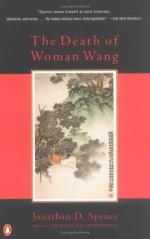|
This section contains 358 words (approx. 2 pages at 300 words per page) |
World of Invention on An Wang
An Wang was one of the pioneers in developing advanced computer memories and also founded Wang Laboratories, a leading manufacturer of word-processing equipment in the 1970s. Wang was born in Shanghai, China; his father taught school in a small town in the vicinity. He was interested in mathematics even as a small child, and he learned English from his parents at home. He earned a B.S. in electrical engineering from Chiao-Tung University in Shanghai in 1940 and spent the next five years, during World War II, building radio equipment for the Chinese army.
In 1945, Wang came to the United States on what was supposed to be an advanced engineering apprenticeship. When the position was not available, Wang became a graduate student at Harvard, earning his M.S. in applied physics in one year and a Ph.D. specializing in nonlinear mechanics.
In 1948, he began postdoctoral studies with Howard H. Aiken at the Harvard Computation Laboratory. There he quickly developed his first invention, the magnetic core memory, which became widely used in computers during the 1950s and 1960s. It consists of tiny ferrite "doughnuts" (iron-based and magnetic) that take and hold the charges placed by current-carrying conductors. Each doughnut or ring represents one bit, and zeros and ones are represented by different magnetic field directions.
When linked in a matrix (an improvement devised by Jay Forrester of MIT), the memories proved to operate quickly. Early magnetic core memories were tiny by modern standards, for example, 256 bits, but they were a great improvement over memories in computers of that day. Though superseded by silicon-based semiconductors in the late 1960s, the magnetic core memory continued to have some applications because it did not rely on electricity to retain its data.
In 1951, Wang patented the magnetic core memory and established his firm, Wang Laboratories. After selling his patent to IBM in 1950s, he manufactured electronic calculators, computers, and in the 1970s computer-based word-processing equipment.
Wang was known for his charitable contributions and he received many professional honors, including being named a fellow of the Institute of Electrical and Electronic Engineers. He was awarded the United States Medal of Freedom in 1986.
|
This section contains 358 words (approx. 2 pages at 300 words per page) |


